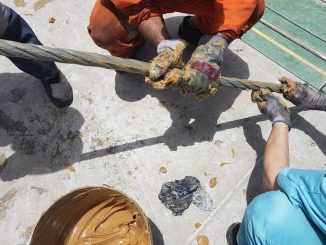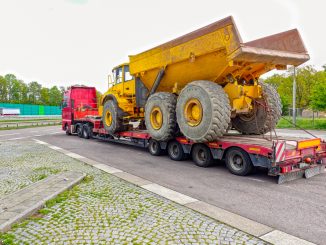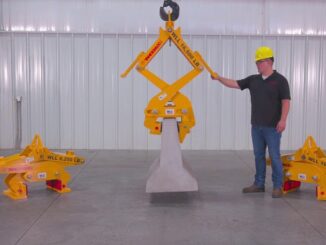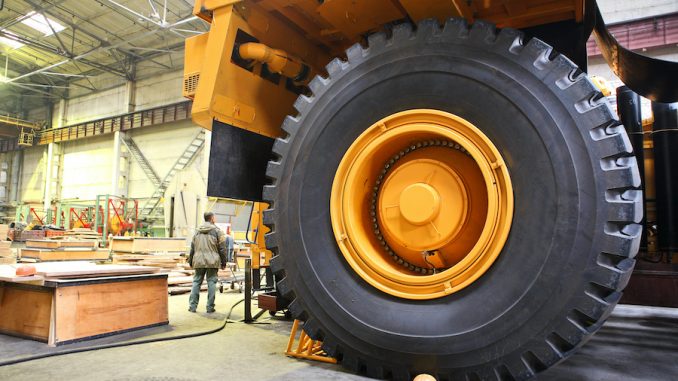
View the complete article here.
Heavy equipment tires. They’re big, they are indeed extremely heavy, and they look indestructible. But it’s their size and the rough conditions they are expected to handle that make their failure dangerous. That’s why maintaining them – and knowing when and how to replace them – is so important.
Maintenance
Heavy equipment tires are expensive. Maintaining them properly will make them last longer. Any equipment failure can delay a project which not only costs money but makes your clients very unhappy. But good maintenance also increases the safety of workers on the job. You can replace a tire, but not someone’s life. There are several proactive things you can do to increase the life of your heavy equipment tires.
Before a Shift
Tire inspection should be part of your overall heavy equipment inspection. There’s a lot of debris around a construction site that can end up stuck in the treads of your tires. Don’t assume that tire issues were discovered in the after-shift inspection. It can’t hurt to reinspect the tires before you fire up the equipment.
After Each Shift
You’ll want to clean the tires before you inspect for damage and debris. (It’s kind of hard to evaluate a tire through the mud and muck.) Remove any debris that is embedded in the tire to prevent it from further damaging it. Be sure to inspect the lugs and check and the rims for damage such as sidewall separation.
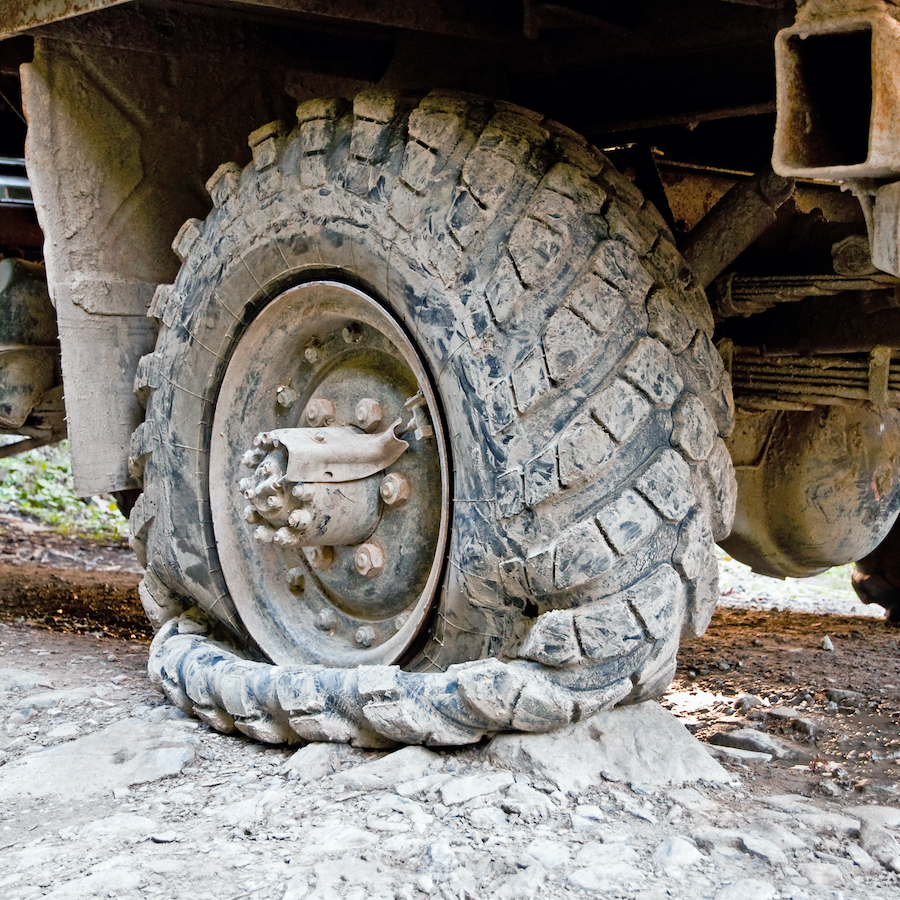
Risk Mitigation
There are several ways to reduce the likelihood that your heavy equipment tires will fail on the job.
Monitoring
Check the tire pressure regularly. The schedule depends on how often you use the equipment in your fleet. A piece of heavy equipment that is driven a lot with a large load size will need close monitoring. For large fleets, a tire pressure monitoring system can automatically check tire pressure, so workers don’t have to. Obviously, if you have just a few pieces of heavy equipment in your fleet, probably just manually checking is sufficient.
Driver Habits
How your operators drive the heavy equipment in your fleet impacts the life of the tires. They should avoid breaking hard and taking turns at high speed. (This extends the life of the tires and the driver.) They should slow down when driving over potholes. Same goes for rough and rutted surfaces. Rapidly starting and stopping will accelerate tire wear and tear.
Storage
Don’t just throw those tires into any kind of storage facility. You want to store your heavy equipment tires somewhere dry and away from corrosive chemicals. The storage area should be at a moderate temperature away from the heat of other equipment. 90 days is the max amount of time you should store your tires. Or at the very least inspect them periodically.
Read the Manual
Seriously, read the manual. Again, these are not ordinary car tires. They are big with a price tag to match. Spend a little time to get to know them and how to properly use and maintain them. Work with your tire dealer to understand the limitations and proper use of your heavy equipment tires. Properly train the equipment operators so they know and adhere to those limitations.
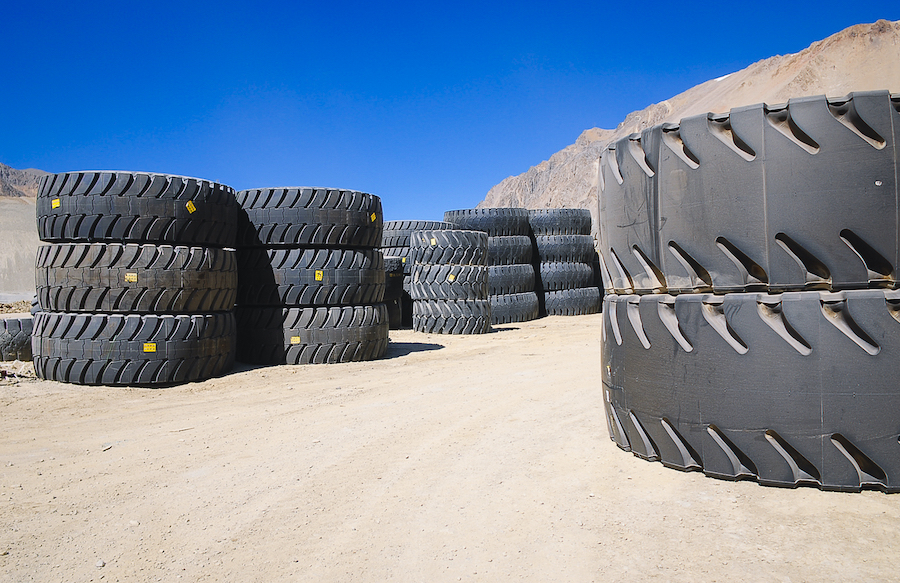
Tire Replacement
You want to get the most out of your tire investment, but you want to replace it before it’s so worn down that it’s unsafe. Selecting the right tire for the job will extend the life of the tire. You select a tire based on classification, TMPH rating, ply rating, and tread pattern.
Tire Classification
Heavy equipment tires are classified based on heavy equipment type. Tires rated “E” are for earth moving equipment such as rigid dump trucks. “L” tires are for loaders and dozers. Finally, “G” tires are for graders. Some tires can be used on two different types of heavy equipment. Only “dual marked” tires should be used for multiple applications. Also, always use one type of tire on a piece of equipment.
TMPH Rating
Tires also received a ton-mile-per-hour (TMPH) rating based on the amount of heat a tire will generate when operated in a particular way. The TMPH calculation includes the limitations of the tire. Each tire type corresponds to the maximum Miles Per Hour (MPH) and distance a piece of equipment can safely handle. They are as follows:
- “E” tires can go 2.5 miles one way at a top speed of 30 MPH.
- “L” tires can only go 250 feet at a maximum 5 MPH.
- “G” tires can go any distance at a max speed of 25 MPH.
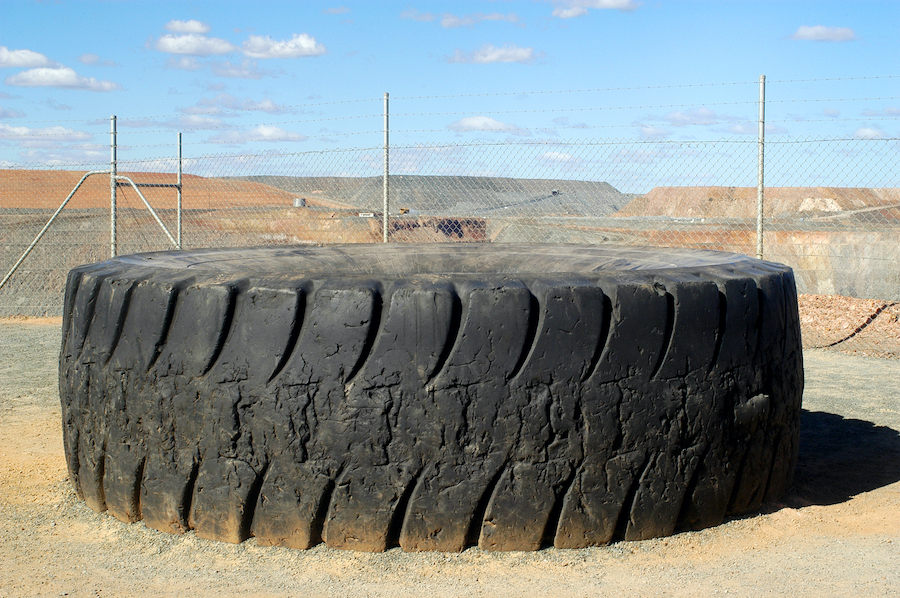
Ply Rating
Ply rating measures the strength and maximum load carrying capacity of bias tires. The ply rating should correspond to both the equipment and the planned application. The higher the ply rating, the higher the maximum allowable air pressure and load carrying capacity. In general, you’ll want to select a tire that can handle the anticipated loads with the lowest inflation pressure.
Tread Pattern
There are several different tread patterns. The tread impacts the equipment’s stability and operation. The wrong tread pattern can result in tread separation, tire overheating, or puncturing. For example, tread pattern one (1) has a rib tread with standard depth used for earth moving typically on roads. A four (4) tread type is a rock tread with a two-to-one lug-to-void ratio for harsh, rocky conditions. Your tire dealer can help you select the right tread pattern for your application.
Wheel Assembly
You can select the perfect tire only to have it fail due to the wrong wheel assembly. The tire must properly fit on the wheel assembly. And it must be safely mounted. The manufacturer’s tire data book will provide specific procedures for mounting and dismounting their tires.
Inflation Pressure
You’ll want to refer to the tire’s manual to ensure that the tire is set at the correct pressure for the load you plan to carry. Do not over-inflate the tires thinking that this compensates for overloading the vehicle. Over inflating the tires can result in impact cuts. Exceeding the tire and equipment capacity is just dangerous.
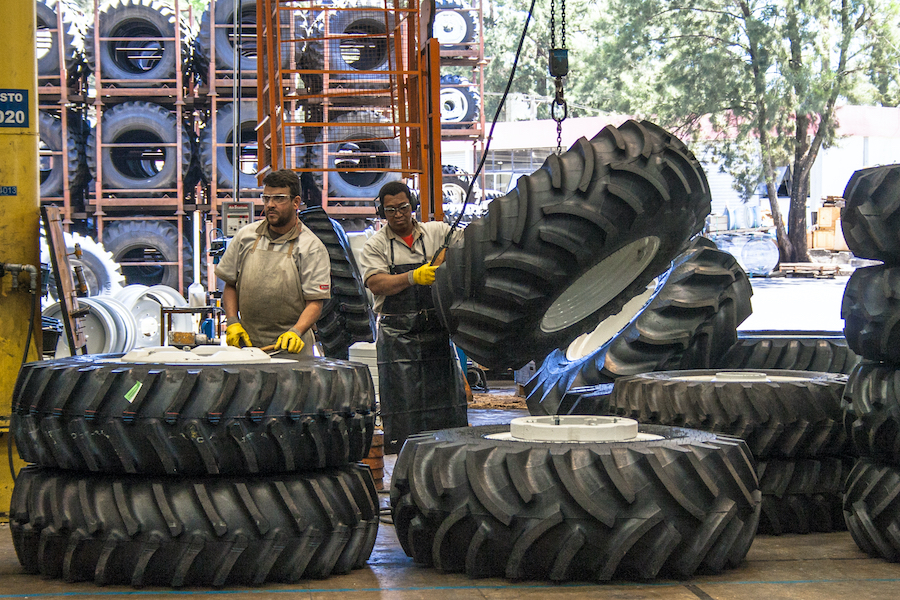
Conclusion
Buying the right tires for your heavy equipment increases worker safety and saves money in the long haul. Consider the job and the terrain as well as the amount of use. Read the manual and follow the tire pressure recommendations. Then be sure to maintain the tires by inspecting them before and after each shift. Finally, properly store your tires between jobs. Follow these tips for selecting and maintaining your heavy equipment tires to increase safety and the bottom line.
View the complete article here.
How often should I check the tire pressure of my heavy equipment, and why is it important?
Regularly monitor the tire pressure, frequency depending on usage, to ensure optimal performance and prevent potential failures; under-inflated tires can lead to increased wear and pose safety risks.
What factors should be considered when selecting heavy equipment tires, and why is proper selection crucial?
Considerations include tire classification, TMPH rating, ply rating, and tread pattern; selecting the right tire ensures extended lifespan, safety, and optimal performance for specific applications and equipment types.




































